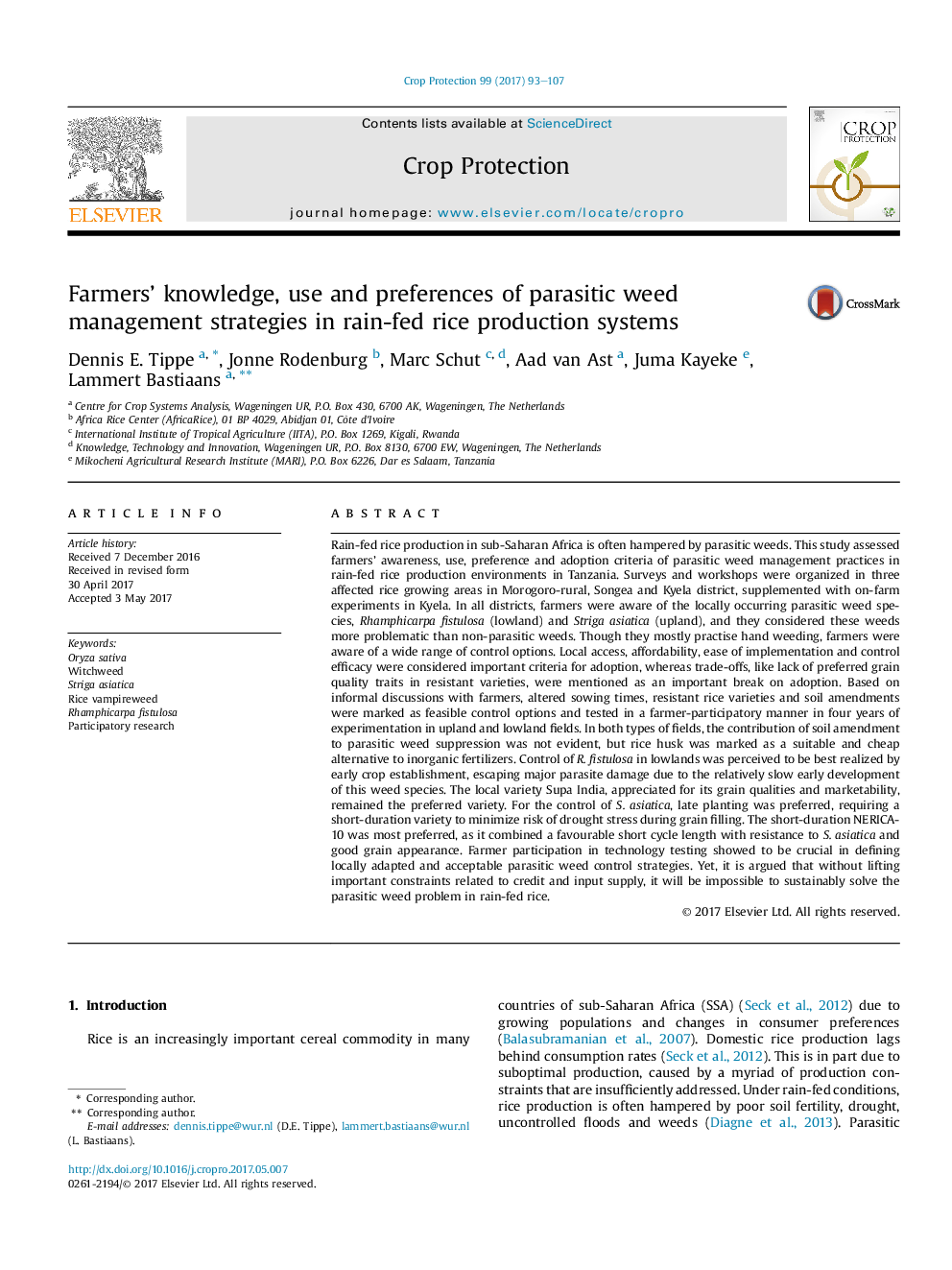| کد مقاله | کد نشریه | سال انتشار | مقاله انگلیسی | نسخه تمام متن |
|---|---|---|---|---|
| 5761038 | 1624288 | 2017 | 15 صفحه PDF | دانلود رایگان |
عنوان انگلیسی مقاله ISI
Farmers' knowledge, use and preferences of parasitic weed management strategies in rain-fed rice production systems
ترجمه فارسی عنوان
دانش کشاورزان، استفاده از ترجیحات و راهکارهای مدیریت علف های هرز انگور در سیستم های تولید برنج با بارندگی
دانلود مقاله + سفارش ترجمه
دانلود مقاله ISI انگلیسی
رایگان برای ایرانیان
کلمات کلیدی
موضوعات مرتبط
علوم زیستی و بیوفناوری
علوم کشاورزی و بیولوژیک
علوم زراعت و اصلاح نباتات
چکیده انگلیسی
Rain-fed rice production in sub-Saharan Africa is often hampered by parasitic weeds. This study assessed farmers' awareness, use, preference and adoption criteria of parasitic weed management practices in rain-fed rice production environments in Tanzania. Surveys and workshops were organized in three affected rice growing areas in Morogoro-rural, Songea and Kyela district, supplemented with on-farm experiments in Kyela. In all districts, farmers were aware of the locally occurring parasitic weed species, Rhamphicarpa fistulosa (lowland) and Striga asiatica (upland), and they considered these weeds more problematic than non-parasitic weeds. Though they mostly practise hand weeding, farmers were aware of a wide range of control options. Local access, affordability, ease of implementation and control efficacy were considered important criteria for adoption, whereas trade-offs, like lack of preferred grain quality traits in resistant varieties, were mentioned as an important break on adoption. Based on informal discussions with farmers, altered sowing times, resistant rice varieties and soil amendments were marked as feasible control options and tested in a farmer-participatory manner in four years of experimentation in upland and lowland fields. In both types of fields, the contribution of soil amendment to parasitic weed suppression was not evident, but rice husk was marked as a suitable and cheap alternative to inorganic fertilizers. Control of R. fistulosa in lowlands was perceived to be best realized by early crop establishment, escaping major parasite damage due to the relatively slow early development of this weed species. The local variety Supa India, appreciated for its grain qualities and marketability, remained the preferred variety. For the control of S. asiatica, late planting was preferred, requiring a short-duration variety to minimize risk of drought stress during grain filling. The short-duration NERICA-10 was most preferred, as it combined a favourable short cycle length with resistance to S. asiatica and good grain appearance. Farmer participation in technology testing showed to be crucial in defining locally adapted and acceptable parasitic weed control strategies. Yet, it is argued that without lifting important constraints related to credit and input supply, it will be impossible to sustainably solve the parasitic weed problem in rain-fed rice.
ناشر
Database: Elsevier - ScienceDirect (ساینس دایرکت)
Journal: Crop Protection - Volume 99, September 2017, Pages 93-107
Journal: Crop Protection - Volume 99, September 2017, Pages 93-107
نویسندگان
Dennis E. Tippe, Jonne Rodenburg, Marc Schut, Aad van Ast, Juma Kayeke, Lammert Bastiaans,
